How to build a neighbourhood on a human scale
Neighbourhoods like Mexico’s Condesa, New York’s famous Williamsburg or Montreal’s Mile-End, are lively, green and vivacious spaces. But a neighbourhood that is a good place to live usually occurs organically, sometimes in a disorganized way. It happens over decades, even centuries, one small business or public bench at a time. Is it possible to recreate these conditions in a brand new location? That’s the challenge undertaken by the ambitious and innovative project that is Pointe-Nord, in Nuns’ Island.
Proment Corporation maximized its chances of success by applying the following modern urban planning principles that have been proven successful in other projects around the world.
1- Finding a great location close to the water
Yes, Montreal is an island, but it offers surprisingly few spots with direct access to water. With Pointe-Nord, the idea was to create the city’s first waterfront neighbourhood, mirroring those found in Copenhagen, Stockholm and Chicago. Nuns’ Island’s northern tip has long been a vacant lot, due to public perception of it being less green and inviting than its southern counterpart. However, Pointe-Nord offers spectacular views of the river and the nearby city skyline and it was only a matter of showcasing them.
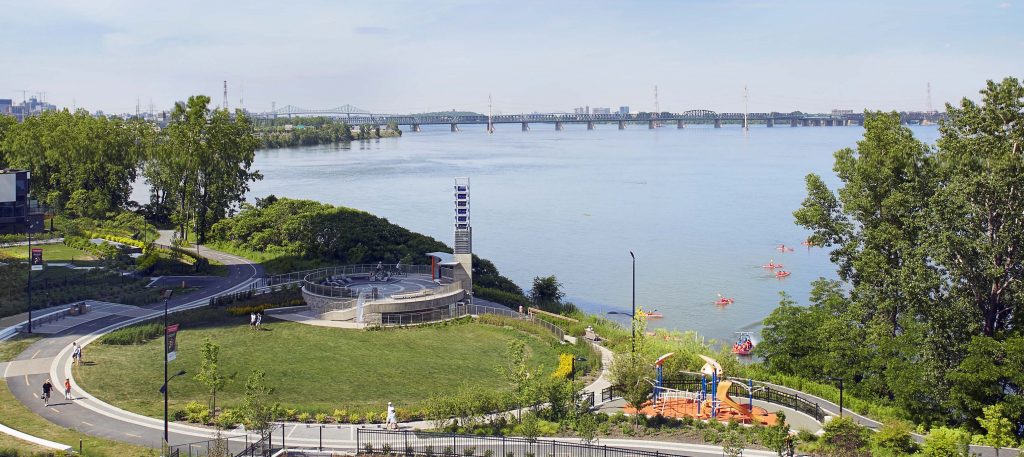
2- Developing a smart and cohesive vision of urban planning
“Take the time to do things right” – that was Proment Corporation president and cofounder Samuel Gewurz’s motto when he conceived Pointe-Nord. The first plans for this new neighbourhood were drawn in 2005, when the promoter worked with San Francisco’s SWA group, which is known for its large-scale urban communities all around the world. Then, in 2008, they had work sessions with Boston’s Sasaki agency, during which they deepened their vision for the neighbourhood. They were inspired by Vancouver’s waterfront settings, where high-rise buildings stand tall among townhouses. Then came the local, Quebec-based teams: Lemay Michaud, Jean-Pierre Bart, Forme Studio and Projet Paysage, working together to ensure a cohesive development. This is a very rare occurrence in architectural circles.
3- Keeping diversity in mind
Three tall, thin, 30-story towers are surrounded by 5-or-6-story buildings and 2-story townhouses. The relationships between these buildings have been carefully studied to create a perfect mix of density and diversity which is much more organic than a long string of tall buildings separated only by parking lots. The wide variety of housing available creates a demographic mix – families, couples, single people, retirees – that makes Pointe-Nord closer to a village than to a commuter town.
4- Making people the top priority
The sensory experience of Pointe Nord pedestrians was a top priority at every step of the project’s design. Every street goes downward towards the water to preserve the water views. The avenues are neither too wide nor too narrow, ensuring that pedestrians feel safe. The lower 20 feet of each building have a unique and inviting siding, and every storefront is slightly different from the others, which is reminiscent of the diversity of a traditional main street.
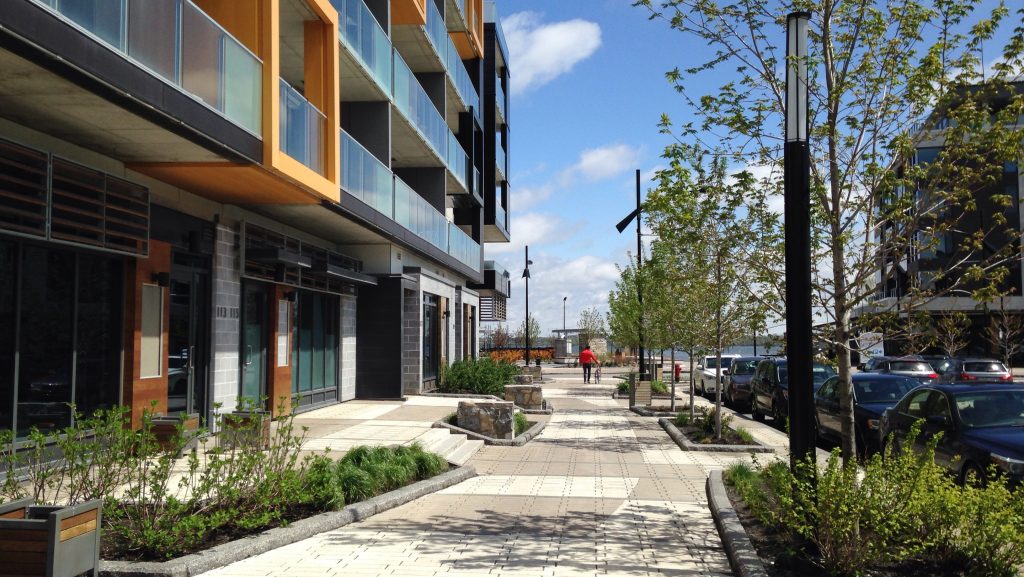
5- Planning a town square
In Europe, every town and village has a central park or space where generations intertwine. It’s a place where anyone can go to enjoy the moment, sip a cup of coffee and simply be among friendly faces. Following that model, the Esplanade park and Pointe-Nord place have been meticulously planned to maximize human interaction, host fun and lively public events and remain an active space all year long. The restaurant’s patio, right next to the park, is an attraction in its own right. In the summer, a variety of jazz groups perform, and in the winter, the agora is transformed into a well-lit waterfront skating rink.
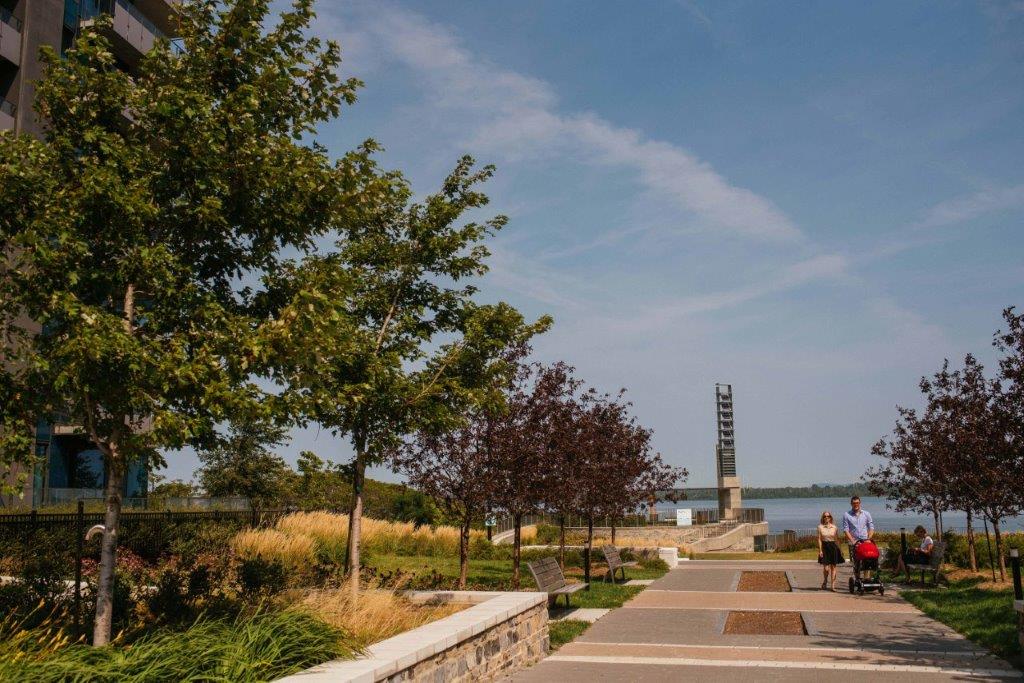
6- Making accessibility a priority
Even though downtown Montreal and the South Shore are less than a 5-minute drive away, Pointe-Nord has been planned to encourage active transportation. The Société des Transports de Montréal (STM) and South Shore bus services cover the neighbourhood. A bike path runs between Pointe-Nord and the rest of Nuns’ Island and the Lachine Canal – you can get to the Atwater market in less than 15 minutes. Communauto, a car-sharing service, provides cars for its local subscribers. And, with the new Champlain bridge, the neighbourhood will be home to a much-anticipated light train station.
A MAIN STREET WITH A CURATED LOCAL BUSINESS SELECTION
To achieve an authentic main street feel, Pointe-Nord’s promoter carefully selected all featured businesses. “We wanted stores with a unique flavour, to recreate an authentic neighbourhood feeling,” explains Ilan Gewurz, Proment Executive VP, who personally sought out exceptional Montreal-based businesses to convince them to come to Pointe-Nord. “It’s pretty unusual for a promoter to reach out to these small businesses instead of well-established, bigger franchises that sign multi-year leases. But we really wanted to give the neighbourhood a soul, just like you would find in a century-old neighbourhood.”
Here are a few of the businesses established in the neighbourhood:
– Les Enfants Terribles, restaurant
– Mamie Clafoutis, artisanal bakery and pastry shop
– Nettoyeur Ile-des-Soeurs
– BMO Banque de Montréal
– M Salon, beauty salon
– Espace Navi, watercraft rentals
– The Shed, studio offering yoga and meditation
A GREEN NEIGHBOURHOOD
Pointe-Nord is one of the first boroughs in Canada to have been granted the LEED Neighbourhood Development certification, which recognizes the responsible and sustainable development of new neighbourhoods. The certification has three main requirements: where to build, what to build, and how the project’s impacts are managed. An eco-friendly and sustainable development is central to a neighbourhood with a long-term vision for the future.
This is an excerpt from an article featured in the magazine Nouveau Projet.




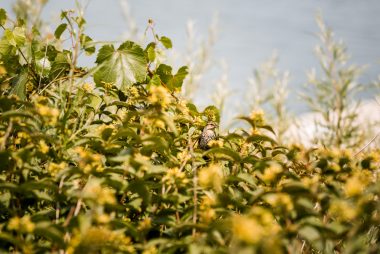
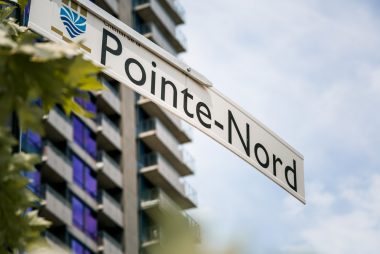
Share your comments